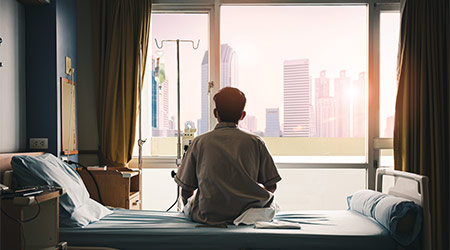Healthcare facilities have come under great scrutiny in the last year as managers and executives now regularly field questions from occupants and the general public about such facility features as HVAC systems, air filtration, sanitizing and traffic flow. Add these components to the list of building features that affect occupant health and the most notable component on such lists — lighting.
In the late 19th century, Florence Nightingale revolutionized hospital design with the signature innovation of large windows that allowed cross-ventilation and abundant natural light. She believed that the light and air quality in a hospital's environment play an important role in patient recovery, according to Scientific American.
In the decades since, numerous studies have shown that Nightingale was right: daylight is a critical determinant of human health and wellness. Interior designers and architects have a number of ways to improve patient access to daylight and improve health in the process. Designs can introduce more daylight deeper into buildings through larger windows and low desk partitions. Innovations such as smart glass make it possible to control the amount of daylight that enters through a window by automatically tinting based on cloud cover and the angle of the sun, eliminating the need for blinds and shades, allowing for views of the outdoors.

 Grounding Healthcare Spaces in Hospitality Principles
Grounding Healthcare Spaces in Hospitality Principles UC Davis Health Selects Rudolph and Sletten for Central Utility Plant Expansion
UC Davis Health Selects Rudolph and Sletten for Central Utility Plant Expansion Cape Cod Healthcare Opens Upper 2 Floors of Edwin Barbey Patient Care Pavilion
Cape Cod Healthcare Opens Upper 2 Floors of Edwin Barbey Patient Care Pavilion Building Sustainable Healthcare for an Aging Population
Building Sustainable Healthcare for an Aging Population Froedtert ThedaCare Announces Opening of ThedaCare Medical Center-Oshkosh
Froedtert ThedaCare Announces Opening of ThedaCare Medical Center-Oshkosh